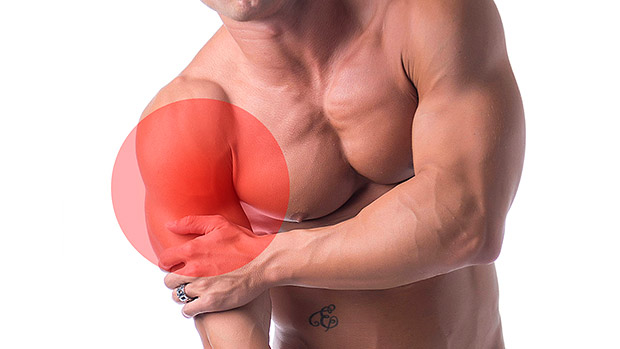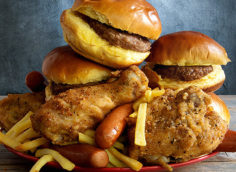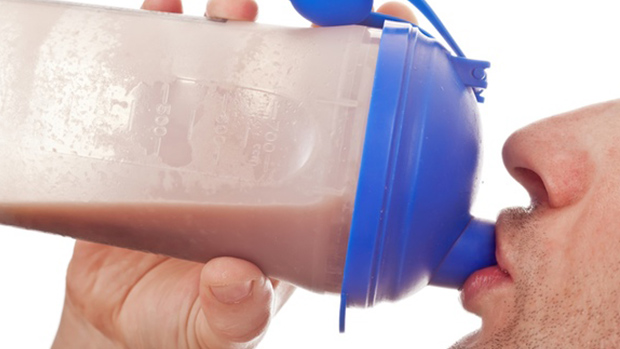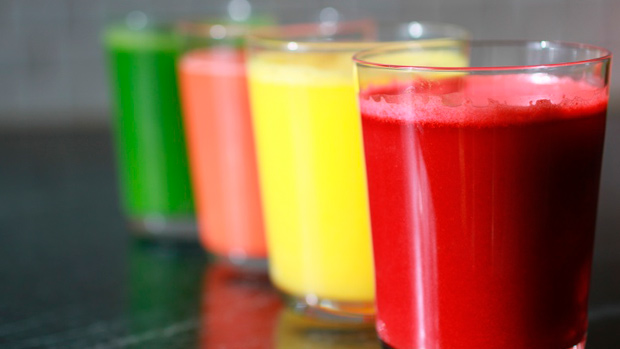Damn DOMS
Delayed onset muscle soreness, or DOMS, is what causes "grandpa walk" 24 to 72 hours after a hard leg day. It's also what happens to your body the day after coming back to the gym after a three-week layoff – it's like your aggrieved ex-mob member wife has beaten you all over with a sock full of oranges so there aren't any bruises.
DOMS can be a big deal to lifters because it can negatively affect workouts, sometimes reducing force capability by up to 50%. And things sometimes get even worse when lifters try to "fix" DOMS through methods that may actually hinder muscle growth.
As pervasive as DOMS is, it's jaw dropping that a lot of lifters still think it's caused by lactic acid buildup. That kind of previous-century thinking turns my humors from sanguine to downright bilious.
Certain types of exercise, lifting weights among them, require more oxygen and more energy than our bodies can deliver, so we're forced to produce energy without oxygen, i.e., anaerobically.
The body continues to metabolize glucose into pyruvate like normal, but since there's now little or no oxygen, pyruvate is temporarily converted into lactate, which allows glucose breakdown – and thus energy production – to continue.
Unfortunately, this extension of energy production can only continue for about 2 or 3 minutes, during which time large amounts of lactate can build up. And yes, this increased lactate (along with other metabolites) increases the acidity in muscle cells and causes that familiar burning feeling.
This temporary build-up of acid, however, has nothing to do with DOMS. Lactic acids levels easily return to baseline within a few hours.
While we know that "lactic acid buildup" isn't responsible for DOMS, we're not entirely sure about what really causes it. Granted, it definitely has something to do with exercise-induced muscle damage, but even that observation is a little muddled.
For a while, we thought that it had largely to do with eccentric-exercise induced damage. The slow lowering of a heavy weight – or the muscular shock incurred through catching a fat baby that fell out of a third story window – would cause an eccentric stretch, causing muscle fibers to stretch, fray, and maybe even tear.
This damage would then release a storm of metabolites that caused the inflammation and pain that were initially characterized as the cause of DOMS.
But the microscope, the MRI, and plain old everyday eyeballing threw some ice on that theory. MRI images and the microscope sometimes show that "damaged" muscle looks perfectly fine, even though the guy whose muscle is being examined swears he feels like he's been run over by a driverless Uber car.
Then there's the case of runners who have virtually no practical idea of what a real eccentric movement is. They often get DOMS, too, after a layoff, regardless of the mostly concentric nature of running.
It is certain that exercise, especially unaccustomed exercise, causes the release of metabolites – including reactive oxygen species – that lead to inflammation, swelling, and soreness. All of that plausibly causes DOMS.
DOMS may also have a lot to do with specialized pain receptors called nociceptors that lie in the spaces between muscle cells. They're presumably activated through the release of the exercise-induced metabolites, regardless of whether or not DOM-affected muscle tissue looks damaged under microscopic examination.
Most DOMS-afflicted lifters pop some Advil, but that can negatively influence muscle protein synthesis and metabolism. Others apply ice, but some inflammation is crucial to the healing process and using ice in cases of acute inflammation might actually hinder recovery.
Foam rolling or massage seems like a safe choice, but research shows these methods have mixed results in alleviating DOMS. Of course, those methods will certainly reduce muscle tension, which can make you feel better while not eliminating the soreness totally.
And forget about trying to preemptively thwart DOMS through pre-workout stretching or warm ups. It doesn't work.
- Curcumin: This plant-derived compound thwarts inflammation and pain by inhibiting a variety of molecules, including phospholipase, lipooxygenase, leukotrienes, thromboxane, prostaglandins, monocyte chemoattractant protein, interferon-inducible protein, tumor necrosis factor, and interleukin-12, among others. Regardless of its inhibitory effect on all these molecules, curcumin doesn't interfere with muscle growth.
- Fish Oils: The omega-3 fatty acids in fish oil can decrease IL-6 and TNF-alpha, two inflammatory factors that angry up the aforementioned nociceptors.
- Caffeine: While the previous two DOMS remedies are taken after exercise, when you're actually hurting, caffeine can preemptively combat DOMS. Approximately 450 milligrams (for a 200-pound man) taken prior to a workout can help block adenosine receptors and help prevent soreness.
Of course the best way to avoid DOMS altogether is to gradually adapt to a new workout, but that kind of advice usually gets filed with all the other "don't run with scissors" stuff you hear repeatedly, so screw that.
- Paulsen G et al. Leucocytes, cytokines and satellite cells: what role do they play in muscle damage and regeneration following eccentric exercise? Exerc Immunol Rev. 2012;18:42-97. PubMed.





